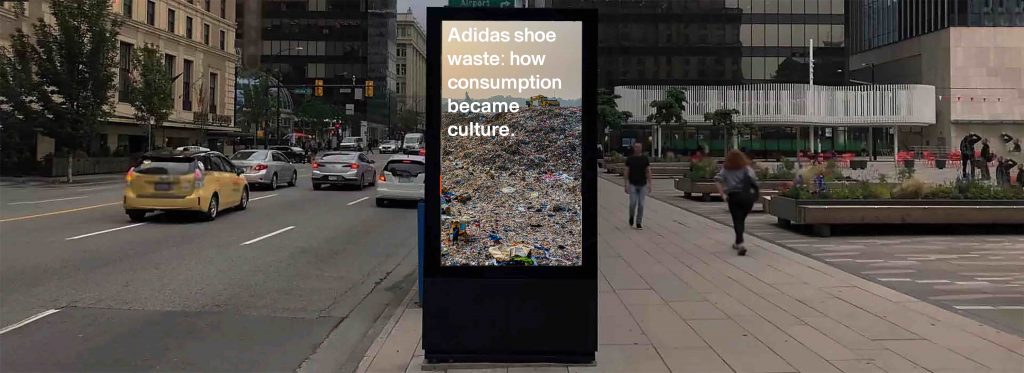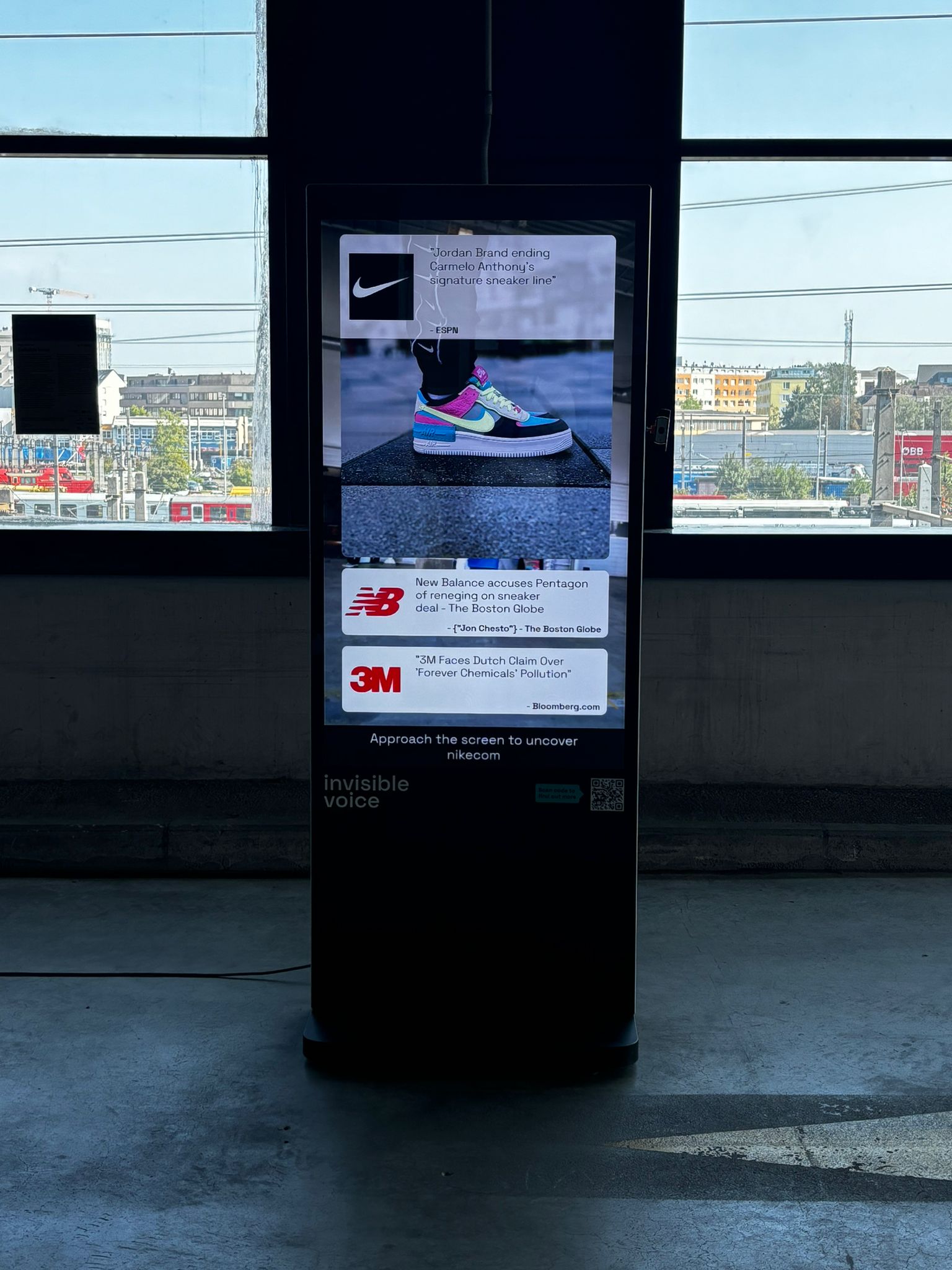S+T+ARTS in the City | Artists-in-Residence
Mark Farid | Invisible Voice
+ About Invisible Voice
Invisible Voice is a digital arts and research project featuring a free browser extension, mobile app, and art installation that aims to reshape societal narratives and unite individuals around shared causes like environmental impacts, human rights, and corporate accountability.
Launching in early 2025, Invisible Voice’s desktop/mobile extension and app empower you with factual and unbiased information about the businesses behind the companies you use. Using data from 37 open-access datasets, it offers scores on political bias, lobbying, sustainability, and more, helping users align their activities with their values. The mobile app also scans products, logos, or barcodes to provide detailed information about materials, ingredients, packaging, and company data. Debuting at Ars Electronica 2024 as an advertising totem board, it identifies the brands you are wearing or holding and displays related subvertisements and news. When approached, the screen reveals data along with an interactive map revealing connections to other companies and individuals.
Prioritising privacy, Invisible Voice repurposes online advertising to create meaningful social impact instead of profit, turning data into action and fostering local communities around specific causes.
“This project it is linked to a broader concept of sustainable development, visualises the interests of different companies and proposes a handy app to decipher the complex web of relationships between companies. And it has a good previous development that ensures the achievement of the goals of the project.” – Tere Badia
+ Artist
Mark Farid is an Artist, Researcher, and Lecturer in Fine Art at Central Saint Martins, University of the Arts London. He specializes in the intersection of the virtual and physical world, and the effect new technologies have on the individual and their sense of self. Farid’s work embodies hacker ethics, such as a focus on privacy policies, use of surveillance technologies, and campaigning for data privacy and protection. His work forms a critique of social, legal, and political models.
Graduated from Kingston University, London, with a First Class (Hons) degree in Fine Art (2014) and has since given talks and participated in group and solo exhibitions in England, France, Germany, Spain, Denmark, Finland, Slovenia, UAE, and Japan.

+ Video Statement
+ Credits
Artist: Mark Farid
Lead Developer: Orange
UX & UI: Tom Shearing
Invisible Voice is created by Mark Farid and developed by Orange. It is co-commissioned by HacTe and MediaFutures with support from the University of the Arts London, Universitat Oberta de Catalunya, and GuestRoomMaribor.
This project has been developed in the context of the S+T+ARTS in the City project. S+T+ARTS in the City has received funding from the European Commission’s Directorate-General for Communications Networks, Content and Technology under grant agreement No. LC-01984766.
S+T+ARTS in the City is funded by the European Union under grant agreement LC-01984766 under the STARTS – Science, Technology and Arts initiative of DG CNECT. Views and opinions expressed are those of the author(s) only and do not necessarily reflect those of the European Union or DG CNECT. Neither the European Union nor the granting authority can be held responsible for them.
















